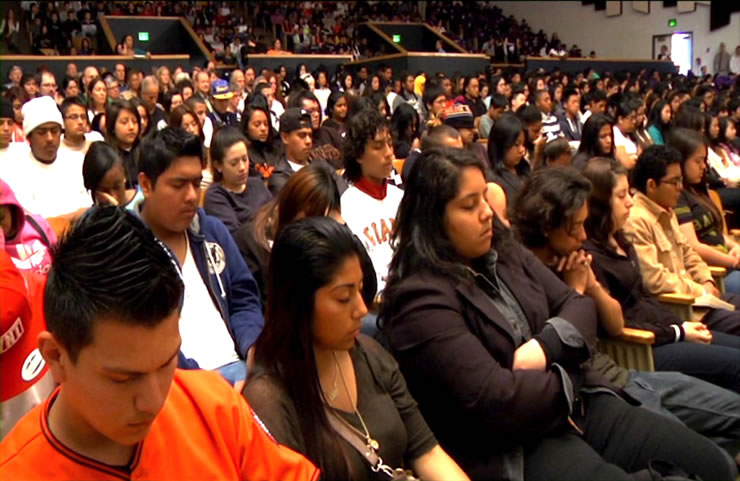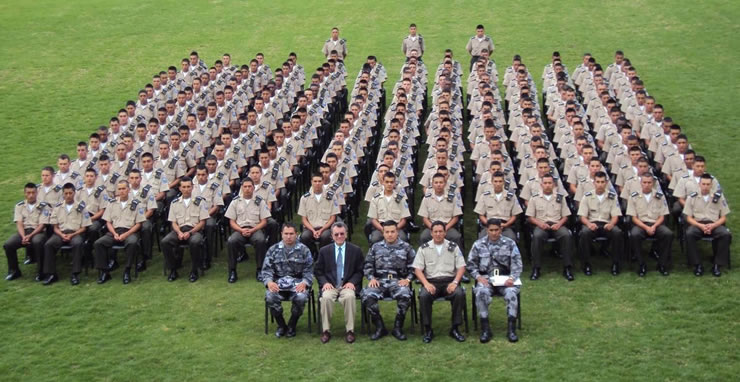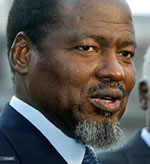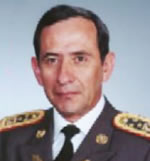Examples of Program Implementation Around the World
Education: reducing stress, optimizing brain functioning, and boosting educational outcomes

Students meditating at a San Francisco public school. Transcendental Meditation practice is being systematically implemented throughout the San Francisco Unified School District in the U.S., with support from the David Lynch Foundation for Consciousness-Based Education and World Peace, under the name “TM/Quiet Time program.”
During the past five years, hundreds of public and private schools and colleges throughout the US, Latin America, Europe, Asia, and the Middle East have incorporated daily group practice of the stress-reducing, peace-promoting technique of Transcendental Meditation.
The driving motivation for educational policymakers and school administrators to implement and maintain this program has been the resulting marked improvements in academic performance, grade point average, school attendance, and graduation rates, and the significant reductions in disciplinary problems and school violence. Since the primary purpose of education is to develop a student’s full mental potential, the incorporation of Transcendental Meditation into the daily academic schedule is natural and logical, and has met with striking success.
There has been extensive media coverage of these highly successful in-school projects and their positive academic outcomes. For a recent NBC News report on a San Francisco TM/Quiet-Time program, click here.
In addition to boosting educational performance, introducing TM into schools and school communities provides an easy way to create and sustain peace-promoting groups at little or no cost. Research has correlated these school and community meditating groups with significant reductions in crime and violence and improved quality of life in their surrounding neighborhoods, and also at the city level. For a brief CBS News report on the crime-lowering effect of a Washington, DC, in-school project, click here. For a quick scan of these educational projects throughout the world, click here.
Military: Building resilience, optimizing performance, and promoting farsighted thinking and action among soldiers

The incorporation of this profound peace-creating approach into the military and military training is a fast-growing phenomenon in many nations around the world. Such training has been shown to boost resilience among troops, effectively “inoculating” them against the ravages of combat stress and resulting PTSD. It is also used by the US Military (DoD) and Veterans Administration for treating soldiers and veterans afflicted with PTSD—a pervasive and escalating problem in the military today. (For a recent report, click here.)
This approach is therefore being incorporated more broadly into military academies and universities. Many countries in Africa and Latin America have introduced this peace-creating approach, either in branches of the military or in academic institutions.
Wherever a sizable group of security forces, such as troops at an army base, is instructed in these technologies of peace, a demonstrable spillover effect of reduced stress and increasing calm is observed throughout the surrounding society. This effect, seen most recently in war-torn Ukraine, has motivated a growing number of active-duty soldiers and veterans to organize themselves into a stable, concentrated peace-keeping force. (See, for example, this video.)
When such a peace-creating group is large enough, a powerful and demonstrable effect is also observed on a national scale. This important national peace-promoting effect is examined in the examples below.
Another successful implementation strategy for a national peace-creating group is within a nation’s security forces. These dedicated and disciplined professionals are charged to protect the nation against external and internal threats. There is very little added cost to train and equip these security forces, or a special wing within the military, with an effective tool to defuse societal stress—before it erupts into social conflict. With this peace-creating approach, it is not only possible but relatively easy to defuse acute societal stress, and thereby neutralize the hostility within the adversary—i.e., thereby eliminate the enmity within the enemy—and thus prevent the outbreak of war.
National Implementation: Mozambique
President Joaquim Chissano

The power of this approach was demonstrated historically when former President Joaquim Alberto Chissano of Mozambique established a Prevention Wing within his military in 1993. After 20 years of civil war that had ravaged his country, creating massive dislocation and poverty, President Chissano introduced the TM and advanced TM-Sidhi program first to his fellow leaders and commanders, and then throughout his national forces, integrating daily group practice into their military routine.
Almost immediately, the intense atmosphere of enmity that had long gripped the country subsided. Crime rates fell significantly, accompanied by strongly positive social and economic trends that culminated in free and open democratic elections—and a lasting state of peace.
President Chissano is heralded today as a preeminent peacemaker, credited with transforming the war-torn country of Mozambique into one of the most successful African democracies.
President Chissano and his former Commander of the Army, Lt. General Tobias Dai, presented these and related results at a series of public conferences and defense-related summits in 1994–1995. It is inspiring and instructive to quote from those conference proceedings:
In our genuine search for possible solutions to the severe problems facing the country, individuals at high levels in our country’s hierarchy began the practice of the Transcendental Meditation program. After serious and critical study of this and related technologies that were being offered, the Joint Chiefs of Staff of the Armed Forces decided to implement these programs within the Armed Forces.
Thus began the sizable task of teaching these programs in the different branches of the military, including Ground, Naval, and Air Forces. During the year 1993, about 15,000 people were instructed. Immediately we saw an improvement in many problems that were prevalent among our forces: including reduced stress-related health and behavioral problems, hypertension, and insomnia. We saw reduced use of medicines, reduced hospital visits, and improved relationships and morale among the troops, who carried out their orders more efficiently. The general tension in the atmosphere was greatly reduced.
Once thousands of people were taught in Maputo, we observed a 20% decrease in violent crime—which was anomalous because, at the end of the war, an increase in crime had been expected. The same thing happened in Quelimane (a decrease of 20%) and also in the province of Manica. The population as a whole became more optimistic, and we saw renewed agricultural and economic activity throughout the country. During that year (1993), we witnessed a very unexpected 19% growth in the economy.
We were most amazed to see that peace was being maintained after so much time of conflict in the country. There was harmony among those who had previously fought. What appeared almost impossible was now a reality: brothers who had been divided by outside forces and had fought against each other, once again understood each other.
These surprising benefits culminated with the realization of free and democratic elections throughout the country, with no significant incidents of violence. Our conclusion is that the implementation of the Transcendental Meditation and TM-Sidhi program within the Armed Forces of Mozambique was well worth the effort, and that results were in line with what was predicted.
—Lt. General Tobias Dai
National Implementation: Ecuador
Lt. Gen. J.M. Villamil

This approach was similarly applied in Ecuador in a field test organized by then Vice-Minister of Defense Lt. Gen. José Martí Villamil de la Cadena. In 1995, Gen. Villamil launched “The Coherence Project,” in which 3,000 Ecuadorian soldiers learned the Transcendental Meditation program and practiced it together—and thereby brought an end to the long-standing, escalating border conflict between Ecuador and Peru.
Gen. Villamil describes this experience in his article “Project Coherence,” published by the defense think tank India Defence Consultants:
The longest and most intense border conflict in South America has persisted since colonial times between Ecuador and Peru…. In December, 1994, a face-off along a disputed border in the high jungle escalated into a major confrontation, and subsequent skirmishes created the risk of a generalized conflict.
We managed to gather six hundred civil volunteers in Quito, the capital city of Ecuador, and three thousand reserve soldiers in a nearby city. The main responsibility of these “Coherence Project” volunteers was to practice meditation [the evidence-based, stress-reducing Transcendental Meditation technique] collectively, to promote calm and social coherence in Ecuador’s disturbed, chaotic, pre-warlike state….
These three thousand soldiers—officers, cadets and troops—meditating together created a formidable wave of positive energy that could be felt at a great distance, generating an upsurge of patriotism in Ecuador and a powerful new spirit of unity. The President made effective decisions and was able to galvanize the national will. The middle ranks demonstrated their capabilities in combat, while small units and individual soldiers fought with discipline and courage. It was the first time in modern history that Ecuador did not suffer a retreat. I am convinced that the Coherence Project’s collective meditation was the key factor that brought about this change.
—Gen. Villamil
Following the implementation of this approach to peace, commerce and diplomacy between Ecuador and Peru started to improve, and these trends continue today. Cultural ties have been strengthened and tourism has increased. The two armed forces are currently planning combined maneuvers to confront common threats.
Gen. Villamil is now working with fellow leaders, generals and defense experts in the Global Union of Scientists for Peace to establish a new, larger, more powerful peace-creating group in Ecuador that will boost economic and social progress and help lead Ecuador out of “underdevelopment” by 2025.
***
Today, every nation should protect itself by establishing its own peace-creating group—whether in a university, within the military, or within a large-scale business or corporation. The benefits of reduced stress—including reduced stress-related disease, reduced crime and social violence, and increased national harmony, creativity and economic prosperity—vastly outweigh the trivial cost of training and maintaining such a group. The number of peace-creating experts required to generate a significant, demonstrable benefit is roughly (according to both theory and experiment) the square root of one percent of the national population—as few as several hundred for a small country, and up to a few thousand for the very largest countries. |


